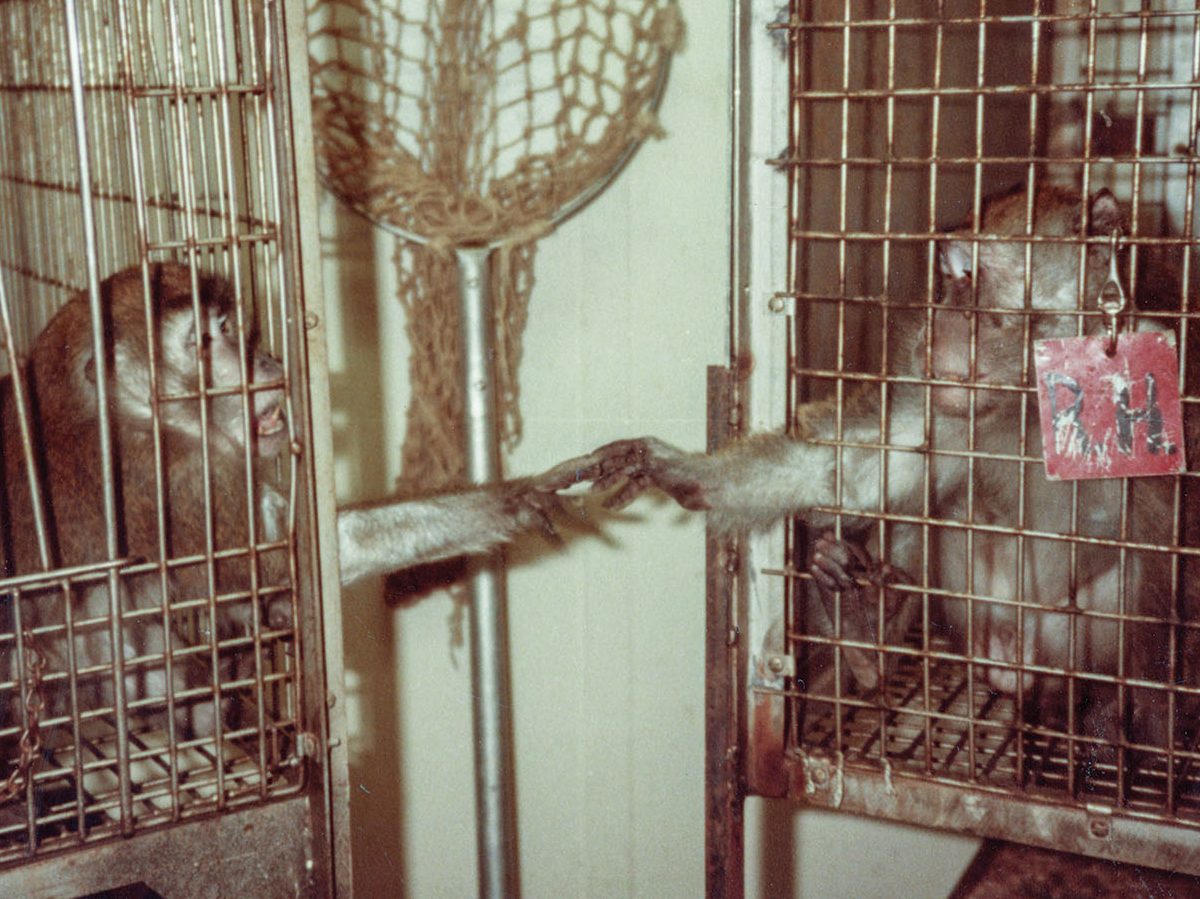Social revolutions erupt in the most unlikely of places, but perhaps none more unlikely than this.
On the morning of Sept. 11, 1981, Montgomery County police raided a nondescript warehouse on Brookville Road in Silver Spring, confiscating 17 rhesus macaque monkeys after receiving a tip from Takoma Park resident and animal welfare activist Alex Pacheco.
Pacheco, then 23, had orchestrated the raid. Masquerading as a volunteer, he had spent four months documenting conditions in the federally funded research lab at the warehouse. He photographed monkeys with open wounds confined to restraining devices that looked like electric chairs. At night, he recalls, he sneaked in experts to attest to the monkeys’ poor treatment.
The researchers who worked at the warehouse had altruistic goals—they were looking for ways to restore limb function to victims of strokes and other traumas, according to Edward Taub, the lab’s director. But the gruesome photographs were too much for even life-hardened cops to ignore. They bit, and raided the Institute for Behavioral Research (IBR). By the next day, Pacheco’s tiny organization—People for the Ethical Treatment of Animals, or PETA—was on its way to becoming famous, known for bold capers and outlandish stunts.
Pacheco, who now lives in Florida, says he became “radicalized” while living in England, enthralled by the animal rights movement there. Returning to the States, he met kindred spirit Ingrid Newkirk, and they formed PETA in 1980, operating it out of a basement apartment in Takoma Park that they shared with a pet pig.
Suburban Washington, D.C., it turned out, was the perfect place to start a revolution. It was close to Capitol Hill; was home to the National Institutes of Health, which funded IBR and scores of other labs; and was a major media hub. And it had celebrities.
It’s true that the animal welfare movement was alive and well before the big raid. But animal lovers had long focused on stray cats and mistreated dogs. They spoke the language of love and companionship. When Pacheco spoke to reporters, he employed the language of Thomas Jefferson, John Locke, Thomas Paine and Voltaire—speaking not of animal welfare, but of animal rights. Forget Paine’s Rights of Man, he said. Fight for the rights of rats.
The Silver Spring monkey case supercharged the animal movement. In 1986, activist Wim DeKok obtained a list of animal groups in the United States from the Farm Animal Reform Movement. There were 80. Today, DeKok’s list—maintained by World Animal Network, and believed to be the most comprehensive—contains 9,000 U.S. groups and 16,000 worldwide. The actual numbers are probably twice those, he says.
There is a group for every flavor of animal lover—from carnivore to abolitionist. “Some [groups] organize a barbecue for their fundraising,” DeKok says. “They eat one animal to support another.” Other groups are so zealous that they oppose the use of guide dogs for the blind.
In the end, both sides in the IBR case declared victory—PETA for getting the first conviction of a lab for animal cruelty, the IBR for having it overturned. In the years since, PETA has moved to Norfolk, Virginia. Newkirk remains its president. Taub went on to the University of Alabama at Birmingham, where at 91 he is still listed as a professor. The last of the Silver Spring monkeys died at a primate center in Louisiana in 1998, according to a spokesman for the Tulane University National Primate Research Center. Pacheco, 63, says he now runs a charity looking for ways to spay and neuter stray dogs with a single pill.
He also advises groups on how to start social revolutions. He says people need several things to create the perfect storm—including Congress, media, celebrities and photographs.
“You need them all,” he says. “But it all starts with the photographs. Nobody’s going to get involved if you don’t have the photographs.”
